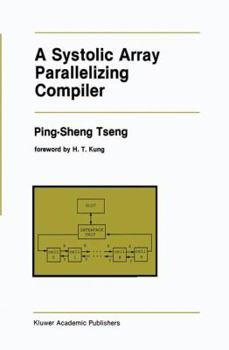A Systolic Array Parallelizing Compiler
Select Format
Select Condition 
Book Overview
Widespread use of parallel processing will become a reality only if the process of porting applications to parallel computers can be largely automated. Usually it is straightforward for a user to determine how an application can be mapped onto a parallel machine; however, the actual development of parallel code, if done by hand, is typically difficult and time consuming. Parallelizing compilers, which can gen- erate parallel code automatically, are therefore a key technology for parallel processing. In this book, Ping-Sheng Tseng describes a parallelizing compiler for systolic arrays, called AL. Although parallelizing compilers are quite common for shared-memory parallel machines, the AL compiler is one of the first working parallelizing compilers for distributed- memory machines, of which systolic arrays are a special case. The AL compiler takes advantage of the fine grain and high bandwidth interprocessor communication capabilities in a systolic architecture to generate efficient parallel code. xii Foreword While capable of handling an important class of applications, AL is not intended to be a general-purpose parallelizing compiler.
Format:Paperback
Language:English
ISBN:1461288355
ISBN13:9781461288350
Release Date:September 2011
Publisher:Springer
Length:130 Pages
Weight:0.49 lbs.
Dimensions:0.3" x 6.1" x 9.2"
Customer Reviews
0 rating





